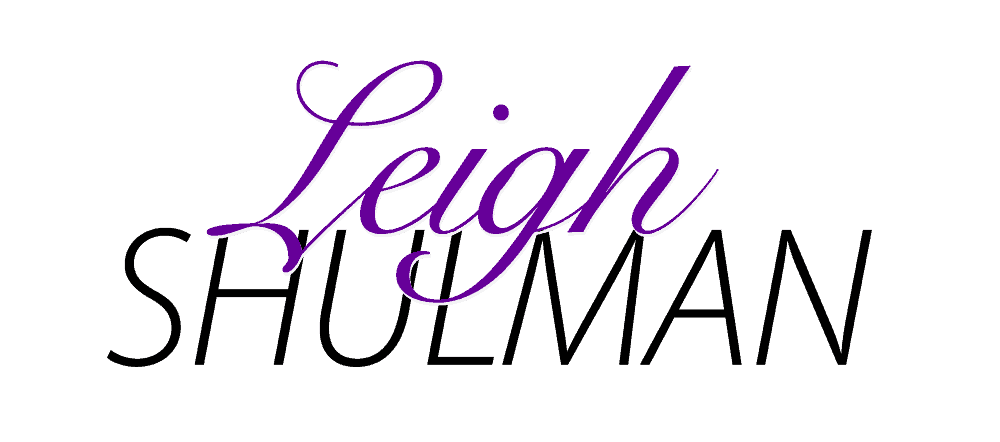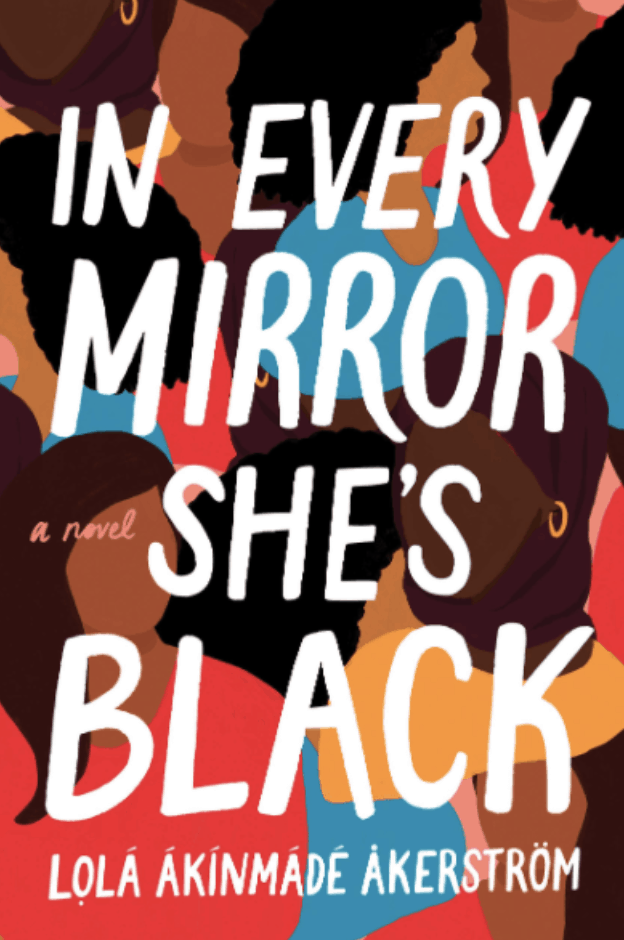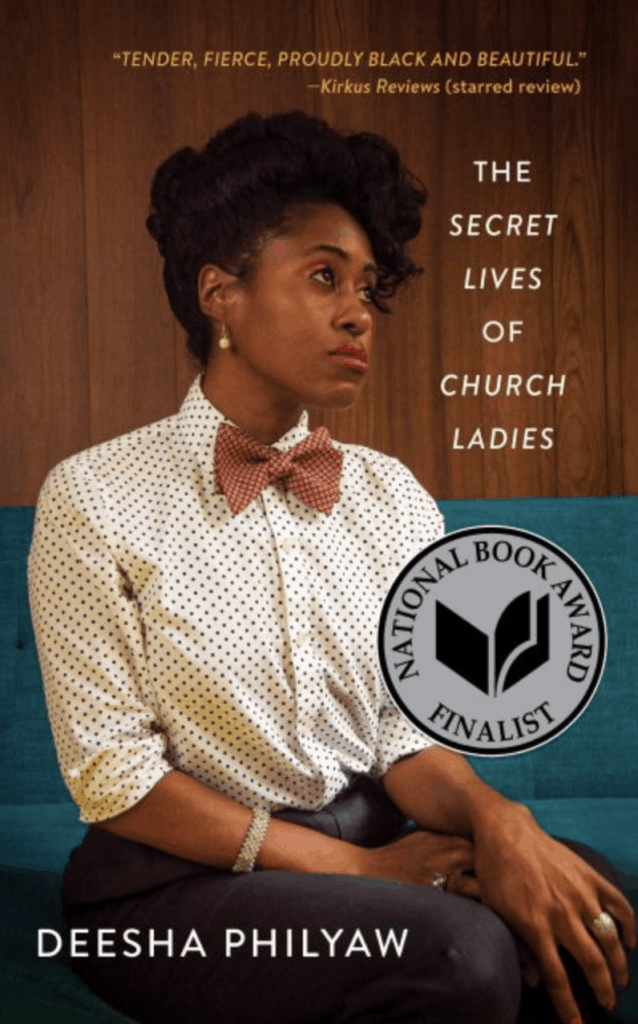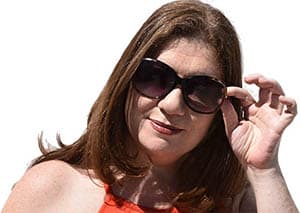When you develop a character in your own writing, think about your favorite character in a novel. What do you remember most about them?
???? Is it Sula’s defiance when she cuts off the tip of her own finger?
???? Holden Caulfield’s never-ending attitude?
???? Maybe you’re a fan of Hermoine Granger’s know-it-all nature that never fails to help others when there’s trouble.
Whether you love the character or hate them, you’re drawn to them through their conflict and how they navigate it throughout the story. Sometimes they win, but not always. They’re flawed, yet you’re still able to relate to them.
But what happens when you can’t relate? And not to just one book, but the many mainstream, best-selling or classic books we read in school, see advertisements of and watch movies about.
What about the readers who want to connect with characters who resemble their lives and experiences but can’t because those books don’t get published?
One major criticism of the literary landscape right now is that publishing is very white. When mostly white people choose the books that the general public reads, publishers are more likely to gravitate to white characters or characters of color who reflect what white readers know and understand.
This reality struck me hard when I learned that 19th-century abolitionist and women’s rights activist Sojourner Truth was mischaracterized to appease white audiences.
She’s perhaps best known for the “Ain’t I A Woman” speech she gave at an 1851 women’s rights convention — and it turns out that the speech I’d read many times in undergraduate and graduate school classes had been altered to make her seem less educated. You can compare the original speech with the one published for wider consumption more than a decade later.
Why would a 19th-century audience be more comfortable with a Black woman who didn’t speak what they considered proper English?
Perhaps modern audiences prefer Black characters who cater to stereotypes over those who have agency and can develop naturally across the course of their arc.
So, how does one write a character with agency over themselves? And how can you develop characters who are true to themselves?
???? I’ve compiled a list of 9 Black female protagonists along with thought questions designed to explore different parts of developing a character. They’re meant to help you think about why writers make choices for their characters that might lean more to the audience’s desire than what’s true for the character.
Learn to Develop a Character With These 9 Black Female Protagonists
There’s no need to reinvent the wheel if you don’t have to. The best way to learn how to properly develop a character and their identity is to revisit how the pros have done it over time.
Here are 9 examples of Black female protagonists who were written with the freedom to be whoever they wanted.
1. Their Eyes Were Watching God by Zora Neale Hurston
A Harlem Renaissance classic, “Their Eyes Were Watching God” is considered the first story about the awakening of African American women.
The book’s main character Janie is introduced as someone in search of something bigger than life had offered her, and she wasn’t afraid to chase it.
Despite the fact that Black women in the 1930s were at the bottom of the totem pole and experienced oppression that stifled their identities and sexuality, Hurston writes Janie as a confident and brave woman seeking self-fulfillment, female rights and autonomy in a male- and race-dominated world. In her fight for independence and the awakening of her consciousness around her dignity, Janie’s voice is her greatest ally and weapon of rebellion.
Hurston uses voice as a tool of power to symbolize Janie’s journey. As a woman who doesn’t want to follow her grandmother’s guidance of finding stability through marriage, Janie’s journey to self-reliance is paved with acts of defiance that break her out of the boxes people put her in — for example, marrying a man townspeople didn’t approve of because he respected her agency and encouraged her to find her voice.
Though the book tackles themes like colorism, racism and oppression of sexuality in a story set in a majorly unprogressive time, Hurston uses them as a device to empower Janie without lightening the severity of these issues.
Think about this: How can you create a diverse character who steps outside of the bounds while being clear about their struggle and why it exists for them?
???? Thought questions:
- Besides her voice, how else does Hurston portray Janie’s fierce personality without spelling it out?
- What role do colorism and superiority play in the character’s relationships? What’s the significance of the theme?
- How does Hurston’s varied use of southern Black dialect add to each character’s development and the story’s authenticity?
2. “Red At the Bone” by Jacqueline Woodson
“Red At the Bone” tells the story of generations of women who are grappling with their sexuality and what they want or don’t want in the future. It weaves their family history in with the Tulsa race massacre.
Moving forward and backward in time, Woodson’s taut and powerful novel uncovers the role that history and community have played in the experiences, decisions and relationships of these families, and in the life of the new child.
While the book centers Black culture, the themes and characters expand beyond the pages to create a poignant and beautiful statement about the choices we make and how we can consciously create family and community.
???? Thought questions:
- How do past generations of Black women impact the women living in the present tense of the book?
- Iris and Aubrey deviate from traditional parent roles in the mom leaves and the dad stays to take care of his child. How does including them as the central parents of the book impact the message of the book?
- Why do you think Woodson places educating women and girls at the center of the book?
3. In Every Mirror She’s Black by Lọlá Ákínmádé
Ákínmádé’s wonderful book, “In Every Mirror She’s Black,” follows the lives of three Black women: Nigerian-born Kemi, who’s at the top of her marketing career but unlucky in finding love; Brittany, a stunningly beautiful flight attendant who moves to Sweden for a man; and Muna, a Somali refugee and religious Muslim who must learn to cope with her own trauma while figuring out how her values can exist in Sweden.
Their lives cross and intersect, showing the various ways class and race impact each of their lives. Each character has different needs and values that stem from the way they were brought up to their religious and educational backgrounds.
Ákínmádé says one of many reasons she wrote “In Every Mirror She’s Black” is because she wanted to free Kemi, Brittany and Muna from having to carry the weight of society or their individual cultures simply because they’re Black. “Even though they are strong, I wanted to give them space to make mistakes and to humanize them deeply.”
Although this story highlights how these women can’t escape their Blackness and other people’s perceptions or judgments of their race, Ákínmádé ensures it doesn’t control their narrative — that’s the key.
As you write diverse characters, remember you can include the truths and realities of their community without making it the center of who they are. Be sure to capture the many dimensions of their personhood.
???? Thought questions:
- How could class affect the way two characters interact with each other?
- How could religious backgrounds influence the way three characters see and judge each other?
- The three characters have limited interaction with each other in this book. Why do you think the author chose to portray them that way?
- As three Black women living in Sweden, a predominantly white country, what role might fetishization and tokenism play in their ability to immerse themselves in a new culture and society?
4. “Small Great Things” by Jodi Picoult
Ruth Jefferson in Picoult’s “Small Great Things” is a labor and delivery nurse at a Connecticut hospital with more than 20 years of experience. During her shift, Ruth begins a routine checkup on a newborn, only to be told a few minutes later that she’s been reassigned to another patient. The parents are white supremacists and don’t want Ruth, who is African American, to touch their child. The hospital complies with their request, but the next day, the baby goes into cardiac distress while Ruth is alone in the nursery. Does she obey orders or does she intervene?
Ruth hesitates before performing CPR and, as a result, is charged with a serious crime.
Booklist gave the book a starred review saying, “[Picoult] offers a thought-provoking examination of racism in America today, both overt and subtle. Her many readers will find much to discuss in the pages of this topical, moving book.”
New York Times best-selling author Roxane Gay praises Picoult’s portrayal of Turk Bueur, a husband, father and white supremacist. She says, “‘Small Great Things’ particularly shines when Picoult writes from Turk Bauer’s point of view […] At times, Turk’s story feels like a history of the modern white supremacy movement, but given the current political climate it is quite prescient and worthwhile.”
But when it comes to race, Gay says the novel fumbles. “Its least believable character is Ruth. Her blackness is clinical, over-articulated.” She goes on to describe how Picoult raises what ultimately feels like a must-have of “Black issues,” from Trayvon Martin to colorism, to microaggressions and more. “Picoult is working through a checklist of issues in an attempt to say everything about race in one book.”
Any book that tries to have a character represent every issue related to their particular race or creed is destined to fall flat.
???? Thought questions:
- What could Picoult have done to create a character who felt more realistic?
- How could she have focused on Ruth to allow her to be a less over-articulated and more realistic diverse character?
5. “Luster” by Raven Leilani
“Luster” explores contemporary sexual manners and racial politics through Edie, a woman in her 20s. She has an affair with Eric, an older white man who’s in an open relationship with his wife. The wife eventually invites her into their white suburban home, where Edie meets their Black adopted daughter Akila. Edie becomes one of the very few Black people she knows, and they begin to share intimate Black experiences together. Race plays a central role in this book, as does Edie’s tenacity as she navigates living with an affluent white family who lives in a white neighborhood and knows very few people who aren’t white. Edie’s observations of herself and her life through this new lens often juxtapose her experiences to theirs.
In an interview with ZORA magazine, “Luster’s” author Raven Leilani says, “When I started this book, it was important to me to write a young Black woman who is hungry and dogged and deeply fallible and who is allowed the latitude to make mistakes.”
Drawn to fiction, movies and TV that inhabit the real estate of ‘the unlikeable woman,’ which she says is the complex and honest depiction of womanhood, Raven noticed the absence of Black women in this perspective. “I really personally wanted to add more to that canon, because I’m not the first to do it.”
???? Thought questions:
- How does Edie combing Akila’s hair impact the way you see the characters?
- How does it shape the book when the author contrasts the older white wife’s body to Edie’s?
- Edie can be unlikeable in her refusal to conform to the rules others in the book have created for her. What makes her unlikeable? Do you see similar characteristics in Rebecca, Eric’s wife? Why or why not?
6. Ruby Hill in “Good Girls”
Famed actress Retta of “Parks and Recreation” also plays Ruby Hill in NBC’s popular show, “Good Girls.” She’s one of three suburban Detroit moms who get desperate enough for cash that they rob a supermarket. When one crime spirals out of control, they suddenly become career criminals.
In case you don’t watch the show, Ruby is Black and the other two moms are white.
There are many scenes where we see Ruby navigate her world as a Black woman. When she and her husband go shopping for a suit and no one in the store would serve them, she calls them out for racism. When the FBI offers witness protection relocation deals to testify against a crime boss, Ruby googles potential locations to check if they’re safe for Black families.
According to Retta, Ruby’s layered portrayal of a Black woman is well done. In this Harper’s Bazaar article about the show’s second season, Retta says she loves playing Ruby because she’s a full human being with a range of emotions. She says, “This is the first time in my [20-year] career that I am getting to play someone who is in a loving and long relationship with her husband and with her best friends.”
As a plus-sized, dark-skinned Black woman, she’s usually just “the sassy Black friend.” The actress says, “Ruby reflects the women I see in the world every day. We need to see more of us. We deserve to get our chances to be funny, bold and complex. Yet despite the reality of our existence, roles like Ruby are few and far in between.”
Because there’s always room for improvement, here’s what I’ve noticed about Ruby: She doesn’t get opportunities to be sexy. Unlike the other two main characters, Ruby doesn’t get any steamy scenes with her adoring husband, and they don’t do anything more than hug or kiss.
Although Ruby’s character is as layered and developed as the other white characters, the show’s story fails to represent her as a sexual being — but this isn’t atypical. Most media fold to the pressures of society’s ingrained fatphobia and standards of beauty, leading to few fat characters who love their bodies and don’t hate themselves.
No matter how they look, your characters are beautiful and whole. As you develop them into multi-faceted people, don’t deny anyone the humanities we all experience (like sexuality), even if some part of the audience won’t find it arousing. There are other kinds of media for that…
???? Thought questions:
- How are these details of Ruby’s life integral to the arc of her character?
- In what ways is being Black integral to her character?
- Would she be equally believable if she was Asian or European?
- If you write a Black or diverse side character — or one that’s one of a few main characters — how can you develop the character fully rather than having them absorb the lives of the white main characters?
7. “The Other Black Girl” by Zakiya Dalila
Similar to Edie in “Luster,” Nella from “The Other Black Girl” also explores race through the lens of Black women working in publishing. Both books feature discussions between Black women about holding each other to higher standards to better fit into their all-white offices.
In this book, Nella desperately wanted a Black colleague to help make her feel less alone and more seen at work. She desired someone who looked like her who could be a friend to hang out with and weather office politics, not to mention the constant microaggressions she suffered. But when Hazel joined Nella on the 13th floor, it became very clear that she had no interest in grouping herself with the other Black girl. Instead, she easily befriended all the white colleagues Nella felt ignored by.
???? While this experience is one many Black people in the workplace can attest to, this book is an example of how you can’t please everyone — and no culture or cultural experience is a monolith. Sharing a race doesn’t mean sharing the same perspectives, goals or desires.
One Goodreads reviewer, for example, describes the characters of “The Other Black Girl” as an unrealistic portrayal of Black women:
“There is no way this could have been written for black women to consume. Ain’t no way! This angered me so much! First off, the cover is beautiful but the title of Other Black Girls gave me pause, and rightfully so. There was so much stereotyping of what black women really do go through while adding a lot of coloring to help non-black readers understand things that really took away from the flow of the story.”
On the other hand, one reviewer said, “The author does a great job of discussing the microaggressions Black women face in the office and exploring what it means to express your ‘blackness’ at work.”
???? Thought questions:
- Does “The Other Black Girl” stereotype Black women? If so, how?
- Does it matter if what’s being described is true to what Black women experience? Why or why not? And if it does matter, who do you think it matters to?
- How could stereotyping in books change the way readers of different races understand the book or Black culture?
8. “The Secret Lives of Church Ladies” by Deesha Philyaw
Philyaw’s award-winning book, “The Secret Lives of Church Ladies,” tells the stories of nine Black church women. Philyaw tells Slate she braced herself for “outright rejection, perhaps, or for editors asking her to make her book less Black” when looking for a publisher. Instead, the book has been so popular, it’s been slated for an HBO series.
So, what works about the book’s depiction of its Black characters? And what can writers learn from Philyaw’s ability to weave so much raw life into them? Although the author wasn’t raised in a religious family, her observations about church throughout her life helped her create fictional yet truly authentic stories.
Kirkus Reviews writes, “No saints exist in these pages, just full-throated, flesh-and-blood women who embrace and redefine love, and their own selves, in powerfully imperfect renditions.” Their flaws resonate in a way that connects with universal issues relating to women, even if the characters were written specifically with Black women in mind.
For example, Nichelle in the story “Dear Sister,” describes the relationships between women connected only because they have the same father. The love, arguments and plates of food they’ve forged together would make anyone jealous of the closeness they share.
???? Thought questions:
- Which Church Lady do you most relate to? What do you love (or hate) about her?
- What role does the connection between mothers and daughters play in the book?
- If you’re a non-Black reader, what cultural differences with religion and family stood out to you the most?
- What larger themes do you see running through the book that defines these Black women and their desires?
Want to read this book? Check out the Church Ladies Book Club Kit here!
9. Annalise Keating in “How To Get Away With Murder”
Viola Davis plays the stunning role of Annalise Keating in Shonda Rhimes’ ABC show, “How To Get Away With Murder.” She leads a group of law students as they try to navigate their way through a string of murders. She’s brilliant and stubborn, and emotional when she’s not standing against you in court. Ruthless as an enemy, Annalise is the kind of person you want on your side.
Despite being perseverant and even sometimes harsh, the show captured Annalise in many forms, which isn’t a freedom many mainstream Black characters are afforded.
For example, Davis talked about her role in the film “Widows” and how it stood out from the roles Black women usually play. The movie begins with Davis’s character in bed with her husband, played by Liam Neeson.
“He’s not my slave owner. I’m not a prostitute. It’s not trying to make any social or political statements. We’re simply a couple in love. And what struck me in the narrative is that I’d never seen it before. And you’re not gonna see it this year, you’re not going to see it next year, you’re not going to see it the year after that.”
This kind of interracial relationship — one that doesn’t rely on the power dynamic of whiteness — was also shown in “How to Get Away With Murder,” between Annalise and her white husband Sam. Whether they were sharing steamy, sexual scenes together, showing each other affection, having an argument or otherwise, Annalise’s agency and Blackness were never compromised.
Besides the show’s portrayal of the intersections of race and sexuality throughout the seasons, we also see Annalise experience a range of emotions and experiences that highlight that she’s only human. Despite her role as the strong Black woman who always figures it out, she also gets to be vulnerable and weak, allowing viewers to see her beyond her exterior.
???? Thought questions:
- How does Annalise Keating echo the narrative of the “strong black woman.” How does she deviate?
- Annalise is also unlikeable in many ways, precisely because she can be so ruthless. How does her unlikeability make her a more realistic character?
- There are times Annalise stands in opposition to other Black women in “How To Get Away With Murder.” Often, she must hurt them in order to get what she wants. In what ways does this break stereotypes of Black women?
???? Don’t Stop Here: Additional Reading to Develop Characters
No one list can capture every aspect of Black women or any other type of character in literature, so don’t limit your knowledge to my list.
Here are a few other book recommendations that explore useful prompts and methods to help you thoroughly develop your characters. Be sure to check out the reading lists for children and YA, too!
???? Picture Books Featuring Black Female Protagonists
???? 10 Books with Wonderfully Nuanced Black Female Protagonists – Electric Literature
???? 50 KidLit & YA Books with Black Protagonists
???? Character Development: How to Write Characters Your Readers Won’t Forget
???? What makes your characters memorable?
???? Do your characters know what your book is about?
???? 9 Character Writing Prompts To Move Your Story Forward
???? Stories that wrestle with Black girls coming of age
What’s a book you’d add to this list? Follow me on Instagram or Twitter and let me know! In the meantime, you can find me in The Workshop, my bustling and engaging community for writers.
This article was written and researched by Leigh Shulman and Farrah Daniel-Bermudez. Some of the links in this article are affiliate links.



